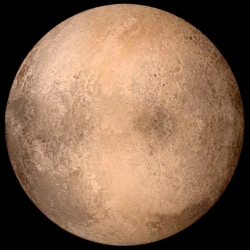
The Wide Field Infrared Survey Telescope (WFIRST) is a future infrared space observatory. On February 17, 2016, WFIRST was formally designated as a mission by NASA. In fiscal year 2014, Congress provided $56 million for WFIRST, and in 2015 Congress provided $50 million.
The fiscal year 2016 spending bill provided $90 million for WFIRST. The WFIRST mission entered the "formulation phase" in February 2016.
WFIRST is on a plan for a mid-2020s launch. The total cost of WFIRST is expected at more than $2 billion; NASA’s latest estimate is around $2.0 billion in 2010 dollars, which corresponds to around $2.7 billion in real year (inflation-adjusted) dollars
The science objectives of WFIRST aim to address cutting edge questions in cosmology and exoplanet research, including:
Answer basic questions about dark energy, complementary to the ESA EUCLID mission, and include:
Is cosmic acceleration caused by a new energy component or by the breakdown of general relativity on cosmological scales ?
If the cause is a new energy component, is its energy density constant in space and time, or has it evolved over the history of the universe?
WFIRST will use three independent techniques to probe dark energy:
Baryon acoustic oscillations
Observing distant supernovae
Weak gravitational lensing
Complete a census of exoplanets to help answer new questions about the potential for life in the universe: How common are solar systems like our own? What kinds of planets exist in the cold, outer regions of planetary systems?, What determines the habitability of Earth-like worlds? This census makes use of a technique that can find exoplanets down to a mass only a few times that of the Moon:
Gravitational microlensing
Gravitational microlensing will also enable a survey of rogue exoplanets that are not around stars.
When one star in the sky appears to pass nearly in front of another, the light rays of the background source star become bent due to the gravitational "attraction" of the foreground star. This star is then a virtual magnifying glass, amplifying the brightness of the background source star, so we refer to the foreground star as the lens star.
If the lens star harbors a planetary system, then those planets can also act as lenses, each one producing a short deviation in the brightness of the source. Thus we discover the presence of each exoplanet, and measure its mass and separation from its star. This technique will tell us how common Earth- like planets are, and will guide the design of future exoplanet imaging missions.
More than 20 planets have been discovered from the ground using this technique. The WFIRST microlensing survey will detect many more such planets, including smaller mass planets since the planet "spike" will be far more likely to be observed from a space-based platform.
This will lead to a statistical census of exoplanets with masses greater than a tenth of the Earth’s mass from the outer habitable zone out to free floating planets. The results from the WFIRST microlensing survey will complement the exoplanet statistics from Kepler, and will provide answers to questions about planet formation, evolution, and the prevalence of planets in the galaxy.
WFIRST will have two instruments. The Wide-Field Instrument (WFI) is a 288-megapixel camera with a 0.28 square degree field of view providing multi-band near-infrared (0.7 to 2.0 micron) imaging using a HgCdTe focal-plane array with a pixel size of 110 milliarcseconds. It includes a grism for wide-field slitless spectroscopy and an integral field spectrograph for small-field spectroscopy.
The second instrument is a high contrast coronagraph covering shorter wavelengths (0.4 to 1.0 micrometers) using novel starlight-suppression technology. It is intended to achieve a part-per-billion suppression of starlight to enable the detection of planets only 0.1 arcseconds away from their host stars.
